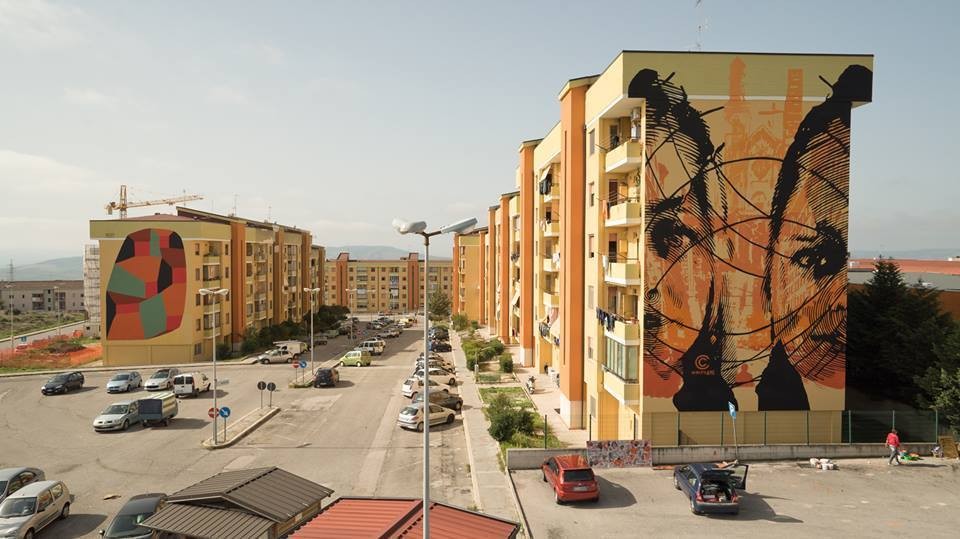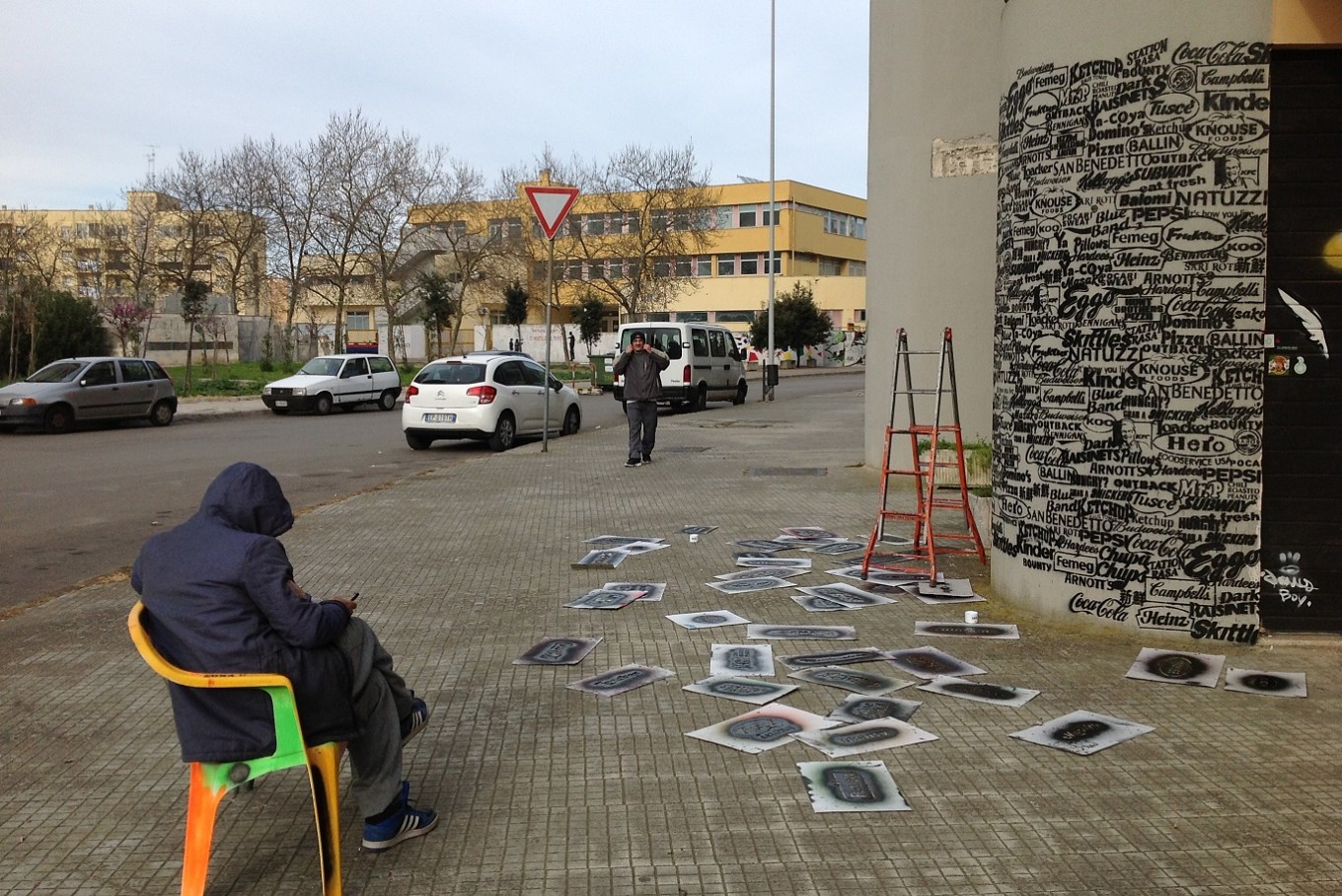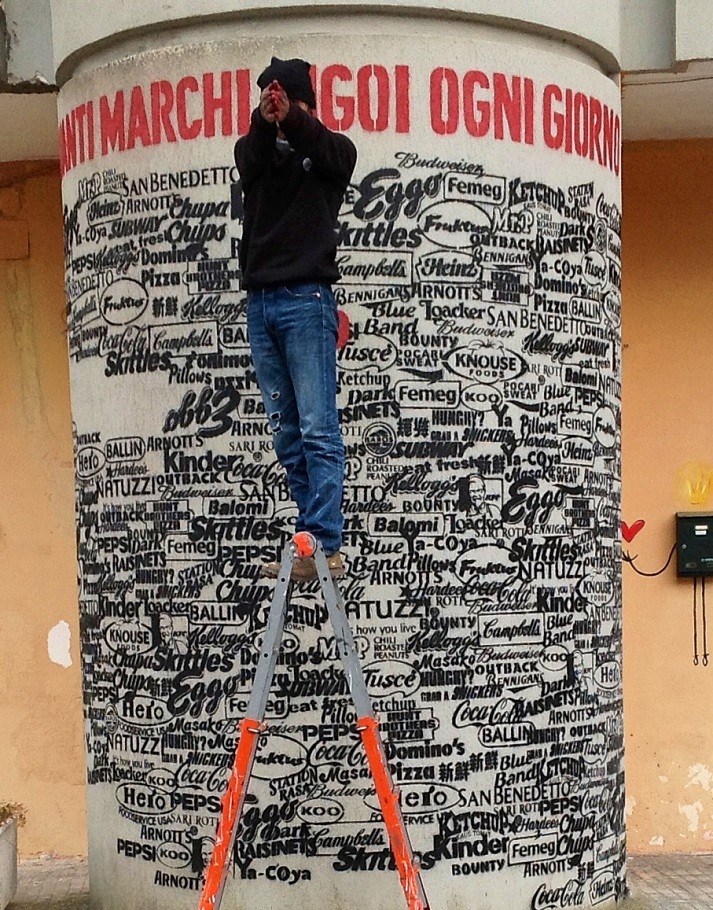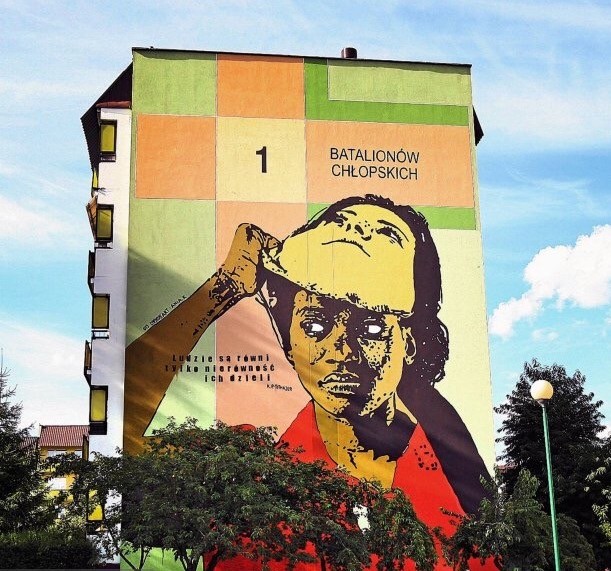Popular Reads
Top Results
Can't find what you're looking for?
View all search resultsPopular Reads
Top Results
Can't find what you're looking for?
View all search resultsLeaving indelible impressions through street art
"The mural is a form of protest against social issues like racism, and reflects our principle that if we make our message striking enough, we can make a difference."
Change text size
Gift Premium Articles
to Anyone
A
n African girl glances nonchalantly as she sheds her white mask, challenging the locals of Bialystok, Poland, who object to the presence of refugees in the city. Her eyes reflect her relief in asserting her individuality, free from the need to repress her identity.
Created as a large scale mural by Italian street artist Chekos’art alias Francesco Ferreri and his longtime collaborator Ania Kitlas, her striking image raised awareness about the plight of Europe’s refugees, as well as the racism, marginalization and other dangers they face.
“[The mural] is as a work of protest we made in 2012, after racists in Bialystok burned down housing for refugees. We were there for a street art festival, and the work wasn’t even approved by the organizers,” said Kitlas. “The mural is a form of protest against social issues like racism, and reflects our principle that if we make our message striking enough, we can make a difference. After all, if one only focuses on aesthetics in their images, then it is only an artwork deprived of a message”.
Read also: Chronicling coming of age through art
 Francesco Ferreri alias Chekos’art tries to raise awareness of the plight of refugees in Europe.(Chekos’art/File)
Francesco Ferreri alias Chekos’art tries to raise awareness of the plight of refugees in Europe.(Chekos’art/File)
The iconic refugee girl is but one of the murals and other graphic art works Chekos’art and Kitlas have created across Europe and Asia. The duo is set to leave their mark in Indonesia, as they undertake an artistic residence in Yogyakarta in collaboration with Indonesian artist Farhan Siki.
“Farhan promoted Yogyakarta as a potential place for street art during his participation at the Lecce Street Art Festival last year. Our research showed the place lived up to its billing,” added Kitlas, who also spoke on behalf of Cekos’art. “Yogyakarta is the Asian version of Berlin, as both cities have a vibrant, youthful art scene. The vibe we get from it is that of an open, warm and artistic place.”
Farhan agreed. “I am certain that Cekos’art and Ania’s stint in Yogyakarta is mutually beneficial to them and local artists. The latter can learn a thing or two about the duo’s experience making large scale murals in cities like Bialystok and Matera, while the former can work and find inspiration in traditional markets and other public spaces,” said Farhan, whose work has been exhibited in Indonesia and around the world in venues like the Saatchi Gallery in London, the Wendt Gallery in New York, and Pin Gallery in Beijing.
“They can use the vibrant chaos of those places as a forum for their art, whereas more orderly places might be a bit sterile and unsuitable for their needs. Yogyakarta is also close to its artistic roots, making it easy for them to derive inspiration, whereas Jakarta is perhaps too commercial.”
Read also: Art Sampoerna set to support local contemporary artists
Revitalizing public spaces
If, for Shakespeare, “all the world’s a stage,” then derelict public places are canvases for Chekos’art and Kitlas. Nowhere is this reflected more than in their murals at Chekos’art’s hometown Lecce and the nearby city of Matera.
“Our murals and graphic art in Lecce, Matera and Villeroux in France helped revitalized these declining urban landscapes, which were not dangerous despite their grubby appearance. The artworks also did wonders for the residents, as it heartened and humanized them,” Kitlas said. “We formed close relationships with local communities and benefited from their local knowledge. We bonded to the extent that they welcomed us to their homes and cooked for us, which went a long way in dispelling their seemingly forbidding, intimidating surroundings.”
She added that this is no less the case with Farhan in Yogyakarta, in addition to their artistic giving and taking.
“The locals’ willingness to welcome us greatly helps in raising a recurring theme in our work, namely a place’s collective memory. Tapping into this is easier in some places than others,” Kitlas said. “For instance, Albania is receptive to bring up their collective memory to us, whereas Macedonia is not, as the high number of Kosovan refugees there are still traumatized by the Kosovo war. On the other hand, we drew a mural of Bruce Lee in China, as he is an apolitical, positive and iconic character."
 A picture of 'Continua' by Indonesian artist Farhan Siki, Lecce, Puglia, Italy, on March 10, 2016.(Farhan Siki/File)
A picture of 'Continua' by Indonesian artist Farhan Siki, Lecce, Puglia, Italy, on March 10, 2016.(Farhan Siki/File)
“Another example of this is when we touched on Lecce’s collective historic memory by highlighting the work of Vittorio Bodini and Carmelo Bene, two poets from Lecce, at the suggestion of locals,” she recalled. “We made murals of both men highlighting their verse in buildings during the festival, which went a long way to raising awareness about them since they died in obscurity over 100 years ago.”
Aside from revitalizing public spaces, Cekos’art and Kitlas have worked their art from the streets to penitentiaries, often improving the lives of young people along the way.
“Young people are willing to take up street art, which is a good outlet because graffiti is illegal. This is a positive development, as the art form increased its scope from just protest art and social commentary to graffiti and fashion,” added Cekos’art, who is known as the artistic director for the BFAKE cultural agency and a mover behind the Street Art South Italy movement, of which the Lecce Street Art Festival is a part. “As a global phenomenon stretching from Europe, Japan and Indonesia, street art brings artists from around the world together. Aside from Farhan, artists from Russia, Spain and Senegal also participated in [the Lecce Street Art Festival].”
Read also: Indonesian artist brings home to Rotterdam
An Indonesian take on street art
 A work by Indonesian artist Farhan Siki, who will collaborate with Chekos’art and his longtime collaborator Ania Kitlas on an artistic residence in Yogyakarta.(Farhan Siki/File)
A work by Indonesian artist Farhan Siki, who will collaborate with Chekos’art and his longtime collaborator Ania Kitlas on an artistic residence in Yogyakarta.(Farhan Siki/File)
The artist stood tall before the column, which he festooned with a mural on consumerism. Iconic food brand names stood out in the jumble, among them Skittles candy and Loacker wafers. Titled “Continua,” the work seemed to reflect the jumbled psyche of its creator, Indonesian artist Farhan Siki. But there is method to his madness.
“As its name suggests, ‘Continua’ is an ongoing, constantly evolving work. I first made it in 2011, but then I picked up where I left off in 2016,” said the 46 year old, a regular on the Italian art scene whose work has been exhibited at Milan’s Primo Marella gallery, Musei dei Bambini l’Aquila in Abruzzo, Aquila, and the Urban Art Project in Sardinia. “Continua attempts to convey the message that life goes on in urban communities, even as they are affected by marginalization, consumerism and other issues.”
Farhan practiced what he preached by incorporating touches of Indonesian culture in his take on local cultures, such as fleeting images of Indonesian cuisine among images of pizza in “Continua.” While this might be jarring or disjointed to conventional eyes, it is an affirmation of humanity for Farhan.
“Continua is about balance, as different cultures influence one another to make distinctive art and a sense of continuity,” he said. “The work emphasizes communication, not conflict, as everyone, both artists and art buffs, are equal in art. After all, [Continua] is inspired and energized by vibrant public spaces, in line with its standing as a commentary on urban life.”
How much of an impact Cekos’art, Kitlas and Farhan’s collaboration will make on the Yogyakarta art scene remains to be seen. But if their work is any indication, the result will be worth the wait. (kes)
***
A media practitioner for over 10 years in both TV and print. Tunggul Wirajuda found a niche in the latter, particularly as a features writer. He often writes about visual or performing arts, but just is at home in writing about automotive, culinary and film, among other things. He can be contacted at twirajuda@gmail.com.
---------------
Interested in writing for thejakartapost.com? We are looking for information and opinions from experts in a variety of fields or others with appropriate writing skills. The content must be original on the following topics: lifestyle ( beauty, fashion, food ), entertainment, science & technology, health, parenting, social media, and sports. Send your piece to community@jakpost.com. Click here for more information.











